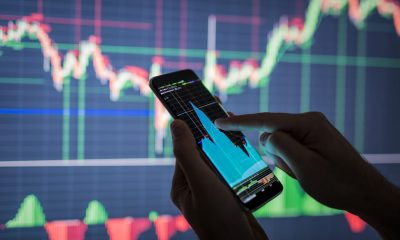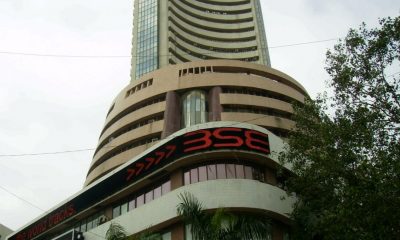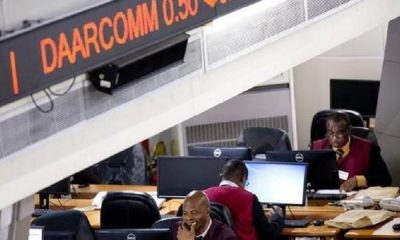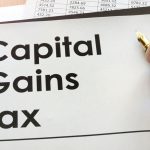Economy
The Evolution of Fast Trading Techniques
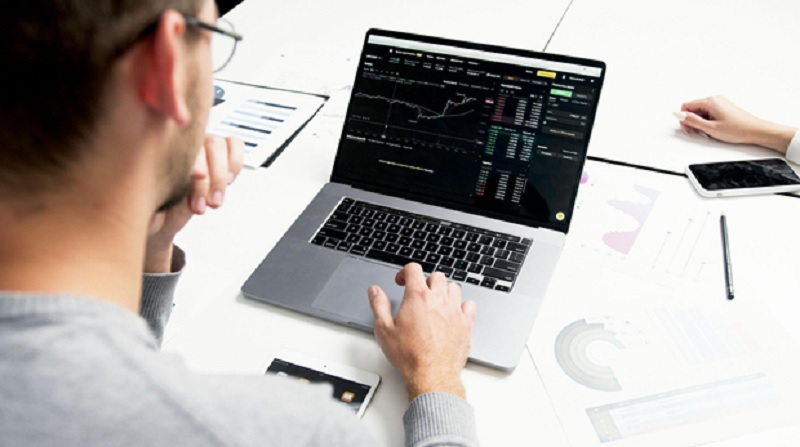
Within the last few decades, the world of stock trading has radically evolved—from a pace of execution measured in minutes to milliseconds. As traders strive to capitalize on market opportunities that may only exist for a few seconds, they will continue to evolve rapid trading techniques to meet the demands of today’s fast-moving financial markets. As technology continues to reshape the contours of financial markets, traders entertain ever-innovative ways that truly equip them to engage in rapid trading at unmatched speeds.
Staying abreast of developments is thus paramount to success. Resources such as Exness Insights help them get all the information they need on the latest trends and technologies in rapid trading—to afford them a deeper understanding of the mechanics behind trading today.
This article looks at the evolution of high-speed trading practices—from the manual handling that first inspired speed traders to today’s high-frequency trading, plus other common techniques.
The Early Days of Rapid Trading
Until the technological revolution, stock trading was entirely manual in nature, wherein traders needed to be physically present on the floor of the exchange and call out orders. It would take minutes or more at times to execute the trades, often depending on the trader’s capability of moving fast and viewing emerging opportunities in real time.
It was only natural that once computers came into use in the 1970s and 1980s, the first automatic trading systems should have begun to make their appearance.
Developers created the early generations of automatic trading systems to assist traders by processing orders electronically, which increased speed and efficiency.
The Emergence of High-Frequency Trading
High-frequency trading as a major innovation came into being through the late 1990s. Algorithms and super-fast technology form the basis of systems that can execute thousands of trades in just a second. High-frequency trading systems generally hunt for minute price disparities in the market. A well-designed, super-fast computer-based high-frequency trading system can process gargantuan amounts of data with order executions in milliseconds.
Using very small changes in price, high-frequency traders take advantage by executing trades faster than human traders could react to. That, in turn, uses a sophisticated infrastructure of low-latency data connections and colocated servers near the stock exchanges for the least possible delay. It is because of this that HFTs are so speedy; traders can exploit opportunities across multiple markets simultaneously, creating more liquidity and therefore a more efficient market altogether.
With great power comes great controversy, though, as the rise of HFT has brought with it a number of concerns regarding market volatility. The sheer number of trades in such a short span can create wild variances in stock prices.
Algorithmic Trading and Scalping Strategies
The most widespread algorithmic trading style is scalping, whereby the trader executes numerous trades throughout the day, each intended to take advantage of tiny movements in prices. Scalpers rely on fast execution and high levels of liquidity to enter positions that could last several minutes or even mere seconds while collecting minuscule profits on each trade.
Algorithmics and scalping trading have both become indispensable parts of rapid trading strategies. Those traders who will be able to master this technique stand to gain from the fast pace of today’s financial markets, where speed and precision are of essence.
The Future of Rapid Trading Technique
As technology progresses, the forward motions of rapid trading will only continue to accelerate and evolve further. Today, artificial intelligence and machine learning are already embedded in trading algorithms, enabling traders to predict market movements with far greater accuracy than ever before. Consequently, through vast amounts of historical data, pattern identification provides AI-powered trading systems with real-time decisions unreachable by humans.
Another sphere that might highly influence the increasing speed—and therefore effectiveness—of rapid trading is quantum computing. Quantum computers can process information at speeds that are exponentially higher compared to conventional computers, which means that the execution speed of the trade will go up, and traders will be in a position to analyze market conditions in great depth until now not achieved.
Outpacing the Competition in Rapid Trading
In rapid trading, an individual’s success largely depends on how informed and flexible they can be. With the continuous evolution in technology, it means that traders have to keep innovating strategies to compete with the increasingly rapid motion of the markets. Properly understanding the history of rapid trading, from the purely manual processes through to today’s sophisticated algorithms, gives a number of insights helpful for traders to keep their efficiency high in a competitive, swift environment.
This would require the proper tools and timely updates on development so that traders could stay ahead of the game and take advantage of the possibilities of rapid trading.
Economy
UK Backs Nigeria With Two Flagship Economic Reform Programmes

By Adedapo Adesanya
The United Kingdom via the British High Commission in Abuja has launched two flagship economic reform programmes – the Nigeria Economic Stability & Transformation (NEST) programme and the Nigeria Public Finance Facility (NPFF) -as part of efforts to support Nigeria’s economic reform and growth agenda.
Backed by a £12.4 million UK investment, NEST and NPFF sit at the centre of the UK-Nigeria mutual growth partnership and support Nigeria’s efforts to strengthen macroeconomic stability, improve fiscal resilience, and create a more competitive environment for investment and private-sector growth.
Speaking at the launch, Cynthia Rowe, Head of Development Cooperation at the British High Commission in Abuja, said, “These two programmes sit at the heart of our economic development cooperation with Nigeria. They reflect a shared commitment to strengthening the fundamentals that matter most for our stability, confidence, and long-term growth.”
The launch followed the inaugural meeting of the Joint UK-Nigeria Steering Committee, which endorsed the approach of both programmes and confirmed strong alignment between the UK and Nigeria on priority areas for delivery.
Representing the Government of Nigeria, Special Adviser to the President of Nigeria on Finance and the Economy, Mrs Sanyade Okoli, welcomed the collaboration, touting it as crucial to current, critical reforms.
“We welcome the United Kingdom’s support through these new programmes as a strong demonstration of our shared commitment to Nigeria’s economic stability and long-term prosperity. At a time when we are implementing critical reforms to strengthen fiscal resilience, improve macroeconomic stability, and unlock inclusive growth, this partnership will provide valuable technical support. Together, we are laying the foundation for a more resilient economy that delivers sustainable development and improved livelihoods for all Nigerians.”
On his part, Mr Jonny Baxter, British Deputy High Commissioner in Lagos, highlighted the significance of the programmes within the wider UK-Nigeria mutual growth partnership.
“NEST and NPFF are central to our shared approach to strengthening the foundations that underpin long-term economic prosperity. They sit firmly within the UK-Nigeria mutual growth partnership.”
Economy
MTN Nigeria, SMEDAN to Boost SME Digital Growth

By Aduragbemi Omiyale
A strategic partnership aimed at accelerating the growth, digital capacity, and sustainability of Nigeria’s 40 million Micro, Small and Medium Enterprises (MSMEs) has been signed by MTN Nigeria and the Small and Medium Enterprises Development Agency of Nigeria (SMEDAN).
The collaboration will feature joint initiatives focused on digital inclusion, financial access, capacity building, and providing verified information for MSMEs.
With millions of small businesses depending on accurate guidance and easy-to-access support, MTN and SMEDAN say their shared platform will address gaps in communication, misinformation, and access to opportunities.
At the formal signing of the Memorandum of Understanding (MoU) on Thursday, November 27, 2025, in Lagos, the stage was set for the immediate roll-out of tools, content, and resources that will support MSMEs nationwide.
The chief operating officer of MTN Nigeria, Mr Ayham Moussa, reiterated the company’s commitment to supporting Nigeria’s economic development, stating that MSMEs are the lifeline of Nigeria’s economy.
“SMEs are the backbone of the economy and the backbone of employment in Nigeria. We are delighted to power SMEDAN’s platform and provide tools that help MSMEs reach customers, obtain funding, and access wider markets. This collaboration serves both our business and social development objectives,” he stated.
Also, the Chief Enterprise Business Officer of MTN Nigeria, Ms Lynda Saint-Nwafor, described the MoU as a tool to “meet SMEs at the point of their needs,” noting that nano, micro, small, and medium businesses each require different resources to scale.
“Some SMEs need guidance, some need resources; others need opportunities or workforce support. This platform allows them to access whatever they need. We are committed to identifying opportunities across financial inclusion, digital inclusion, and capacity building that help SMEs to scale,” she noted.
Also commenting, the Director General of SMEDAN, Mr Charles Odii, emphasised the significance of the collaboration, noting that the agency cannot meet its mandate without leveraging technology and private-sector expertise.
“We have approximately 40 million MSMEs in Nigeria, and only about 400 SMEDAN staff. We cannot fulfil our mandate without technology, data, and strong partners.
“MTN already has the infrastructure and tools to support MSMEs from payments to identity, hosting, learning, and more. With this partnership, we are confident we can achieve in a short time what would have taken years,” he disclosed.
Mr Odii highlighted that the SMEDAN-MTN collaboration would support businesses across their growth needs, guided by their four-point GROW model – Guidance, Resources, Opportunities, and Workforce Development.
He added that SMEDAN has already created over 100,000 jobs within its two-year administration and expects the partnership to significantly boost job creation, business expansion, and nationwide enterprise modernisation.
Economy
NGX Seeks Suspension of New Capital Gains Tax

By Adedapo Adesanya
The Nigerian Exchange (NGX) Limited is seeking review of the controversial Capital Gains Tax increase, fearing it will chase away foreign investors from the country’s capital market.
Nigeria’s new tax regime, which takes effect from January 1, 2026, represents one of the most significant changes to Nigeria’s tax system in recent years.
Under the new rules, the flat 10 per cent Capital Gains Tax rate has been replaced by progressive income tax rates ranging from zero to 30 per cent, depending on an investor’s overall income or profit level while large corporate investors will see the top rate reduced to 25 per cent as part of a wider corporate tax reform.
The chief executive of NGX, Mr Jude Chiemeka, said in a Bloomberg interview in Kigali, Rwanda that there should be a “removal of the capital gains tax completely, or perhaps deferring it for five years.”
According to him, Nigeria, having a higher Capital Gains Tax, will make investors redirect asset allocation to frontier markets and “countries that have less tax.”
“From a capital flow perspective, we should be concerned because all these international portfolio managers that invest across frontier markets will certainly go to where the cost of investing is not so burdensome,” the CEO said, as per Bloomberg. “That is really the angle one will look at it from.”
Meanwhile, the policy has been defended by the chairman of the Presidential Fiscal Policy and Tax Reforms Committee, Mr Taiwo Oyedele, who noted that the new tax will make investing in the capital market more attractive by reducing risks, promoting fairness, and simplifying compliance.
He noted that the framework allows investors to deduct legitimate costs such as brokerage fees, regulatory charges, realised capital losses, margin interest, and foreign exchange losses directly tied to investments, thereby ensuring that they are not taxed when operating at a loss.
Mr Oyedele also said the reforms introduced a more inclusive approach to taxation by exempting several categories of investors and transactions.
-

 Feature/OPED6 years ago
Feature/OPED6 years agoDavos was Different this year
-
Travel/Tourism9 years ago
Lagos Seals Western Lodge Hotel In Ikorodu
-

 Showbiz3 years ago
Showbiz3 years agoEstranged Lover Releases Videos of Empress Njamah Bathing
-

 Banking7 years ago
Banking7 years agoSort Codes of GTBank Branches in Nigeria
-

 Economy3 years ago
Economy3 years agoSubsidy Removal: CNG at N130 Per Litre Cheaper Than Petrol—IPMAN
-

 Banking3 years ago
Banking3 years agoFirst Bank Announces Planned Downtime
-

 Banking3 years ago
Banking3 years agoSort Codes of UBA Branches in Nigeria
-

 Sports3 years ago
Sports3 years agoHighest Paid Nigerian Footballer – How Much Do Nigerian Footballers Earn



